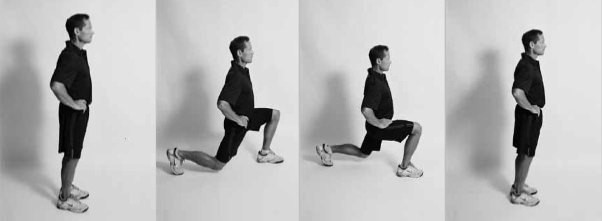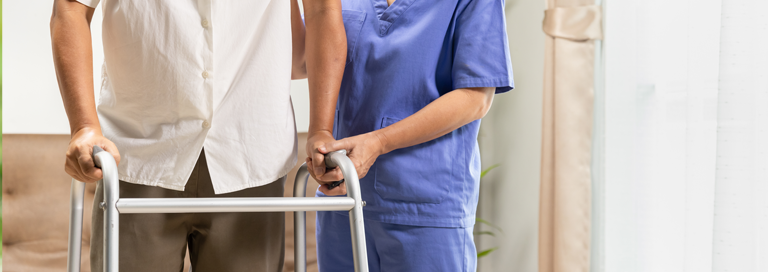Most doctors will tell you that frailty is an inevitable and irreversible part of aging. They couldn’t be more wrong.
Worse than that, this is an extremely dangerous position to take.
Multiple studies now reveal that frailty – an all-too-common condition among seniors characterized by severe loss of muscle mass (sarcopenia), weight loss, and debilitating fatigue – makes older adults extremely susceptible to…1,2,3
- Severe infections, like pneumonia
- Increased risk of losing your independence
- Congestive heart failure
- Alzheimer’s
Conventional doctors don’t talk about it with their patients because there isn’t any drug to treat it.
Do you know why I’m the only one telling you about this?
Because there is nothing natural about frailty, and there’s plenty you can do to stop – and even reverse – it. At the Sears Institute for Anti-Aging Medicine, I prove it almost every day.
Frailty is caused by a combination of muscle loss and cellular slowdown. And that means any solution to frailty has to be a two-pronged attack.
A string of recent studies reveals one of the most effective solutions to frailty – plus the added anti-aging power – is to boost your body’s levels of a metabolite called Urolithin A.
Urolithin A, or UA, is produced by gut microflora from foods rich in ellagitannins, a natural plant-based antioxidant that I’ll tell you about in a minute.
Multiple studies now show that UA helps cells to replace worn-out mitochondria, the little power generators inside each of your cells that provide your body with energy.
You see, when your muscles weaken as you age, it’s often because your mitochondria aren’t working correctly. These key studies show UA can slow and even reverse this deterioration.4
The bad news is that most people don’t have any UA in their systems.5
But the good news is that while scientists haven’t yet identified which
specific gut bacteria convert ellagitannins into UA, direct supplementation of UA combined with ellagitannins-rich foods can reboot your failing muscle mitochondria.This will ward off the risk of frailty and keep you mobile, healthy, and independent far into old age.
Here’s what I recommend to my patients…
-
- Eat more ellagitannins: Some of the wealthiest sources of ellagitannins are raspberries, arctic brambles, blackberries, strawberries, pomegranates, walnuts, as well as oak-aged wines. These ellagitannins are polyphenols, powerful natural antioxidants that have long been linked to heart and anti-cancer benefits. Once your gut microflora digests them, they can be converted into Urolithin A. The problem is that only some have the right mix of microflora in their gut. That’s why I always recommend my patients take UA supplements along with an ellagitannins-rich diet.
- Take a UA supplement: Studies show that Urolithin A is safe and works wonders on aging muscle mitochondria.6 UA supplements have been shown to improve mitochondrial health by activating mitophagy, recycling defective mitochondria, and improving mitochondrial health in pre-clinical models of aging. Their study found that seniors taking Urolithin A supplements performed better in physical endurance tests. UA has also been shown to boost muscle strength and function. You can buy UA supplements in pill and powder form, which can be mixed into breakfast yogurt, smoothies, or water. I recommend taking 1,000 mg per day.
- Build muscle to slow aging. Along with boosting your body’s levels of Urolithin A, building muscle is key. And exercise is the most powerful tool for building muscle. I recommend starting with the largest muscles in the body for the most significant impact. Those are the quadriceps on the front of your thighs. In one study, researchers had older men do exercises similar to what I recommend in my PACE program. They worked three times per week on their lower body. And their quad strength increased by as much as 226%.7
Here’s a PACE move to increase the strength in your quads. It’s called alternating lunges. They are among the best leg exercises older adults can do. This exercise improves quads and strengthens hips, glutes, hamstrings, and inner thighs.
• Place your hands on your hips. Keep your back straight and hold your head high.
• Take a step forward with your right leg until your front knee is bent 90 degrees and your back knee almost touches the ground.
• Use your quad muscle to push back off your leading leg and return to starting position.
• Repeat with your left leg. Alternate until you are slightly out of breath.
To make it truly PACE, increase the challenge slightly with each set. I call that “progressivity.” Also, to get stronger quads and muscle strength even faster, use “acceleration.” That means shortening your recovery time between sets or getting up to your desired intensity faster.
 |
To Your Good Health,

Al Sears, MD, CNS
References:
1. Iwai-Saito K, et al. “Frailty is associated with susceptibility and severity of pneumonia in older adults (A JAGES multilevel cross-sectional study).” Sci Rep. 2021 Apr 12;11(1):7966.
2. Wallace LMK, et al. “Investigation of frailty as a moderator of the relationship between neuropathology and dementia in Alzheimer’s disease: a cross-sectional analysis of data from the Rush Memory and Aging Project.” Lancet Neurol. 2019 Feb;18(2):177-184.
3. Knowlton AA, et al, Heart failure and mitochondrial dysfunction: the role of mitochondrial fission/fusion abnormalities and new therapeutic strategies. J Cardiovasc Pharmacol. 2014 Mar; 63(3):196-206.
4. Andreux et al. “The mitophagy activator urolithin A is safe and induces a molecular signature of improved mitochondrial and cellular health in humans.” Nat Metab. Nat Metab. 2019 Jun;1(6):595-603.
5. Singh A, et al. “Direct supplementation with Urolithin A overcomes limitations of dietary exposure and gut microbiome variability in healthy adults to achieve consistent levels across the population.” Eur J Clin Nutr. 2021. doi: 10.1038/s41430-021-00950-1. Online ahead of print.
6. Singh, A. et al. “Orally administered urolithin a is safe and modulates muscle and mitochondrial biomarkers in elderly.” Innov Aging. 2017 Jul; 1(Suppl 1):1223-1224.
7. Frontera WR et al. “Strength conditioning in older men: skeletal muscle hypertrophy and improved function.” J Appl Physiol. 1992. 64: 1038-44.

